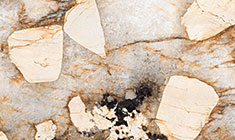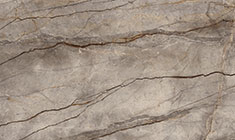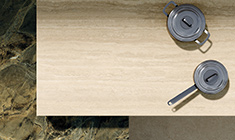When I was little, I hated my parents’ garden. We lived in a fancy neighborhood in Thessaloniki, where all the villas nearby had perfectly manicured lawns and neatly trimmed bushes . Ours was different–three acres of land personally tended to by my father, an engineer who hated all those clichés. Most of what he was cultivating came from his own father’s garden, who had grown up in a poor family in northern Greece and later became a human rights lawyer. So, we had olive trees, vineyards, tiny roses, fig trees, almond trees, and cherry trees. Some plants grew side by side in a way no landscaper or garden designer would have ever envisioned. It looked like a farm in the middle of a picture perfect neighborhood. I was so embarrassed by it. Only later in life did I realise that the wildness of that garden was essential for turning me into a free person and a thinker.
Sometimes, when you’re not an architect and want to design a house, you do it in a way that simply reflects who you are. In Greece, you often see this kind of anonymous architecture in villages and islands: houses are naturally bright and seamlessly blend with their natural surroundings. They’re pure, unpretentious and deeply in tune with nature. In the middle of my childhood home, for instance, my parents created a green- house with a glass ceiling. I remember the direct sunlight filtering through the greenery and into the house as I walked to the bathroom every morning. There were four bathrooms in that house and each had different tiles. My parents’ had black and white tiles. Mine had blue tiles on the floor and on the sink, with wood all around. I love how tiles can bring a sense of warmth to a space. Perhaps it’s their scale or modularity.
There’s a certain perfection in them. Wherever you go in the world, tiles have a way of making you feel at home.
Today, we live in New York, which kind of feels like a huge garden too. You can feel the city has grown organically and been shaped by people in a very anarchic way. Public space is, in a sense, an artificial garden, a translation of nature within the city that allows for a democratic exchange. One garden I love here is in the Noguchi Museum: the way his work interacts with trees and other natural elements moves me. It’s a reflection of his personality, just like my dad’s garden was for him.
Most people focus so much on the interior of their house that they neglect the garden, treating it as just an afterthought. Instead, the two should be conceived together, almost as if making a storyboard. Where do I want to wake up in the morning? Where will I sit while drinking my coffee? What do I want to be hearing?
I ended up getting married to my husband Leo in my parents’ garden. It felt real, unique and liberating, especially because I had struggled with that garden all my life. I remember guests in fancy dresses making their way down a narrow path my father had built with concrete blocks. We set the tables among the vineyard and the olive trees. At the garden’s lowest level we built a plywood deck for dancing. The moment people stepped on it, they felt like they were lost in a forest, even though we were in the middle of the city. It was a rite of passage for me.
During the pandemic, we moved to my parents’ place for six months. My firstborn was two and a half years old and my dad taught him to pee in the garden. When we came back to New York, he’d got into the habit of running off, right in the middle of Brooklyn or Manhattan, to pee on a tree. Today, when he and his brother say: “We want to go to Greece,” what they really mean is they want to go to my father’s garden. They love walking down the path he built, which transforms through the seasons and smells like thyme and chamomile. And so, the love for that garden carries through the generations, allowing our family to connect with nature in the most direct way.
Floors and steps: Mystone Travertino20 Navona
Pool: Crogiolo Lume Bone Swing
External Facades: Slow Pomice
Objects of Common Interest:
Founded by Eleni Petaloti and Leonidas Trampoukis, Objects of Common Interest engages the intersection of art, design, and architecture. Based between Athens and New York, the studio explores a diverse range of scales, from sculptural objects and installations to immersive environments and public art projects, anchored by a deep fascination with materiality, conceptual exploration, and tangible spatial experiences. Ob- jects of Common Interest were named Designer of the Year by Wallpaper* in 2022 and at the Elle Deco International Design Awards in 2024. This essay was written by Eleni Petaloti.




































